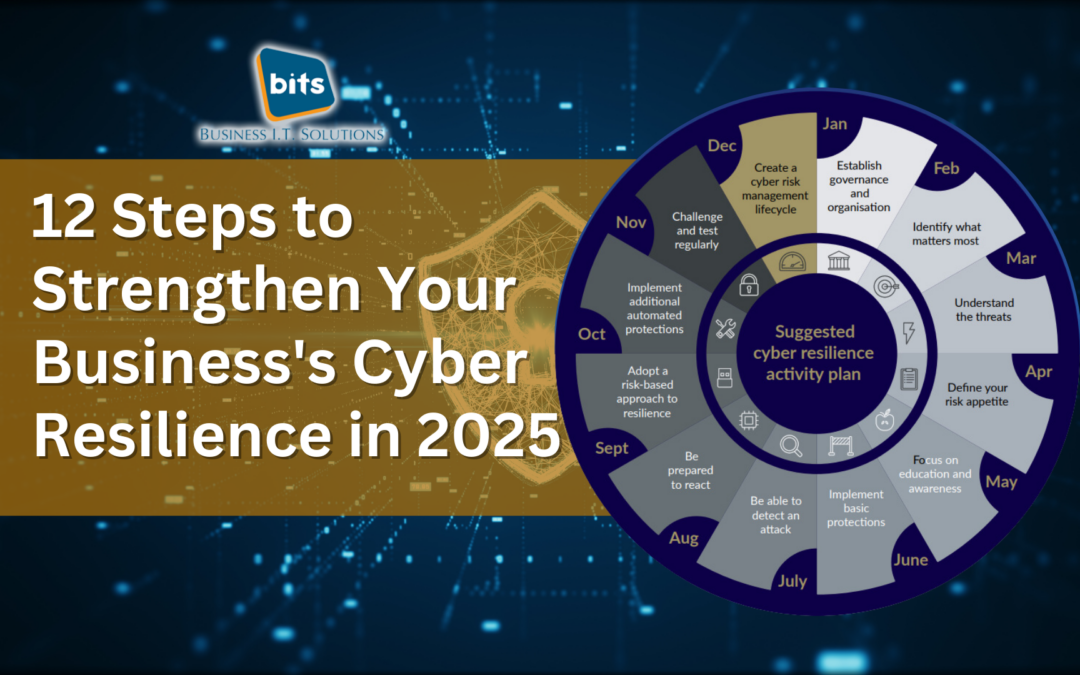In today’s interconnected world, cyber risk is a prevalent and critical concern for businesses of all sizes. As technology advances, so do the threats posed by cybercriminals, making robust cybersecurity essential for safeguarding your operations, reputation, and data. Here are 12 stepsthe governemnt of Ireland has recommended that every business can take to bolster security and ensure cyber resilience in the face of growing cyber threats.
1. Establish Governance and Organisation
Start by defining clear roles, responsibilities, and a strategy for cybersecurity. Secure senior management buy-in and develop policies, standards, and reporting mechanisms. Governance ensures that cybersecurity efforts align with business objectives and are taken seriously across the organisation.
2. Identify What Matters Most
Determine your critical assets from data to operational systems and map out their importance to your business processes. Include third-party suppliers in your assessment, as they can often be a point of vulnerability.
3. Understand the Threats
Evaluate who might target your business, why, and how. Whether it’s ransomware, phishing, or supply chain attacks, understanding potential threats allows you to focus your defenses where they matter most.
4. Define Your Risk Appetite
Quantify your potential losses from cyber incidents to determine acceptable risk levels. Use this understanding to guide investments in cybersecurity tools and measures.
5. Focus on Education and Awareness
Educate employees about cybersecurity risks and their role in preventing attacks. Training should be ongoing and tailored to different roles, especially for high-risk users such as executives and administrators.
6. Implement Basic Protections
Adopt foundational security measures like firewalls, patch management, anti-malware, encryption, and secure configurations. A Vulnerability Management (VM) program and Identity and Access Management (IAM) can further enhance your defenses.
7. Be Able to Detect an Attack
Set up monitoring systems to identify suspicious activity. From simple alerts to a 24/7 Security Operations Centre (SOC), these tools provide early warning of potential breaches.
8. Be Prepared to React
Develop a documented incident response plan, tested regularly. This plan should involve a cross-functional team and cover everything from containment to recovery, ensuring minimal disruption during an attack.
9. Adopt a Risk-Based Approach to Cyber Resilience
Create recovery plans, including robust backups, tailored to the criticality of your systems. This ensures that your business can bounce back quickly from disruptions.
10. Implement Additional Automated Protections
Strengthen your defenses with advanced tools like Intrusion Prevention Systems (IPS), Intrusion Detection Systems (IDS), and Data Loss Prevention (DLP) systems. Automating IAM and VM processes can also improve efficiency and coverage.
11. Challenge and Test Regularly
Conduct simulations and red team exercises to evaluate your ability to respond to cyberattacks. Regular testing ensures that your strategies remain effective against evolving threats.
12. Create a Cyber Risk Management Lifecycle
Cyber risks evolve constantly, and your cybersecurity security measures should too. Establish a lifecycle for continuous assessment, improvement, and alignment with regulatory requirements and best practices.
Practical Considerations
Every business is unique, and so are its cybersecurity needs. Smaller businesses might focus on implementing basic protections first, while larger ones may require specialised teams and advanced tools. Regardless of size, prioritising cybersecurity is non-negotiable in today’s digital landscape.
Take the first step towards a secure future by identifying your vulnerabilities and addressing them systematically. Need expert guidance? Contact us at BITS to develop a cybersecurity plan tailored to your business needs.

